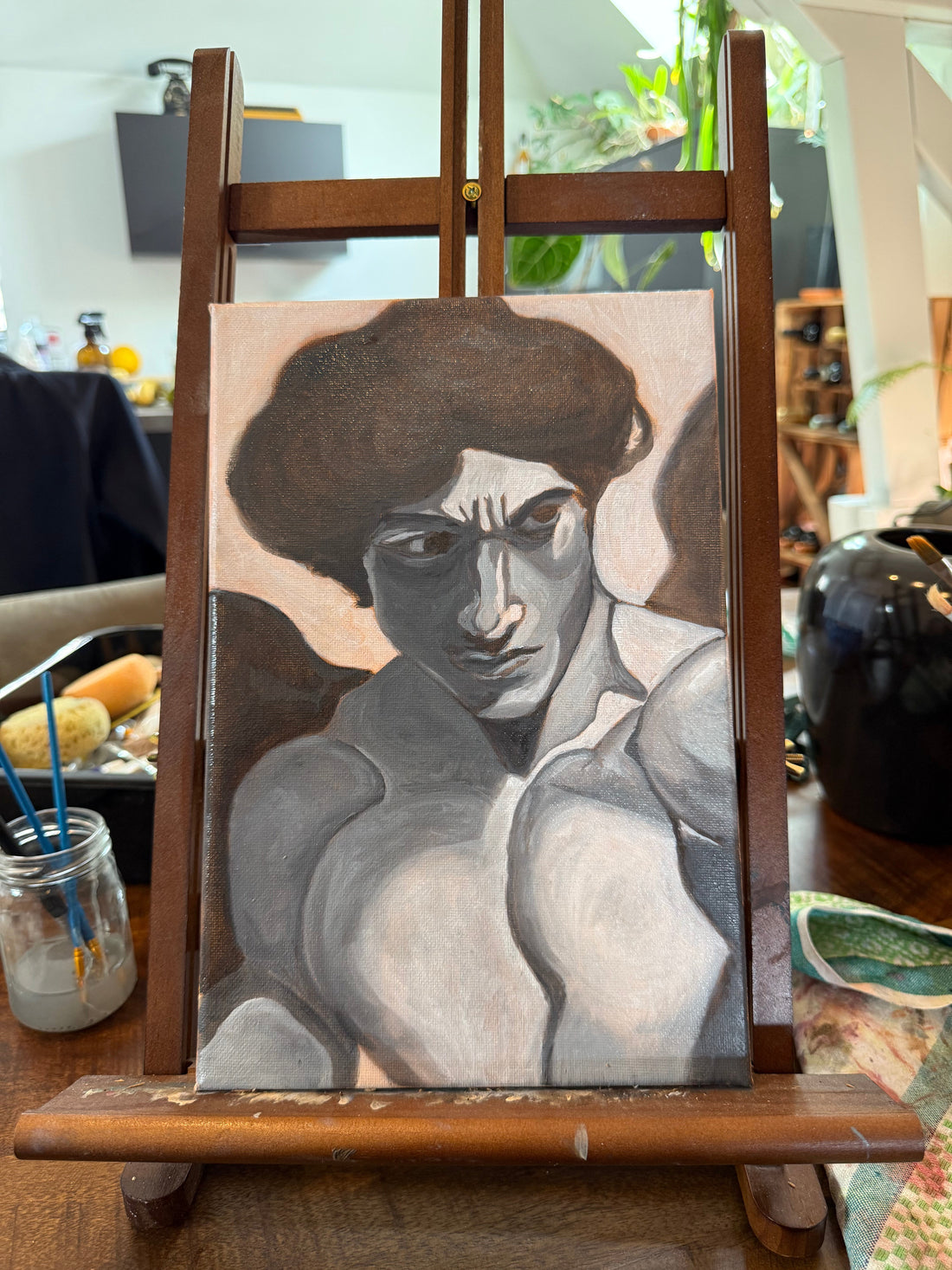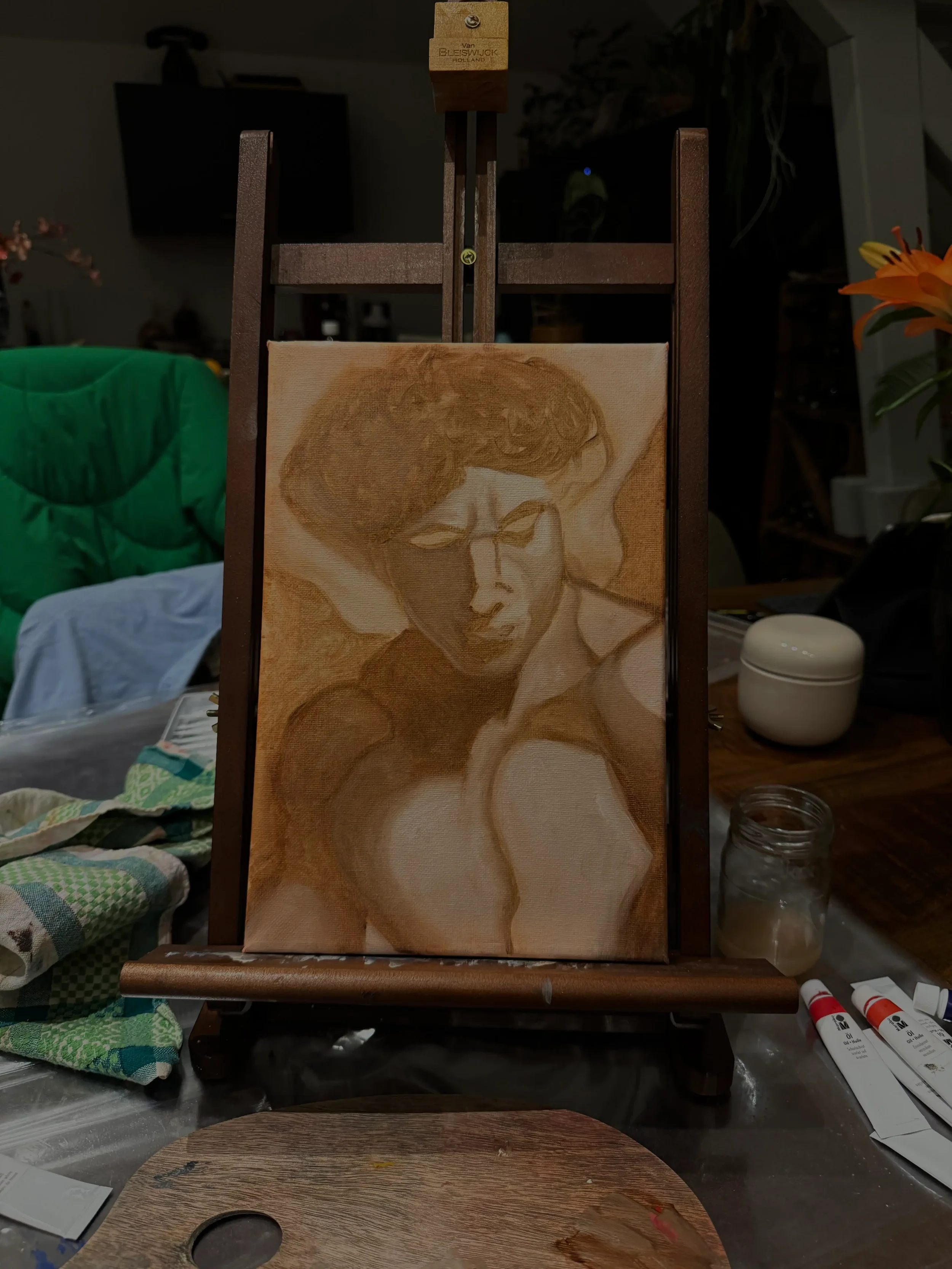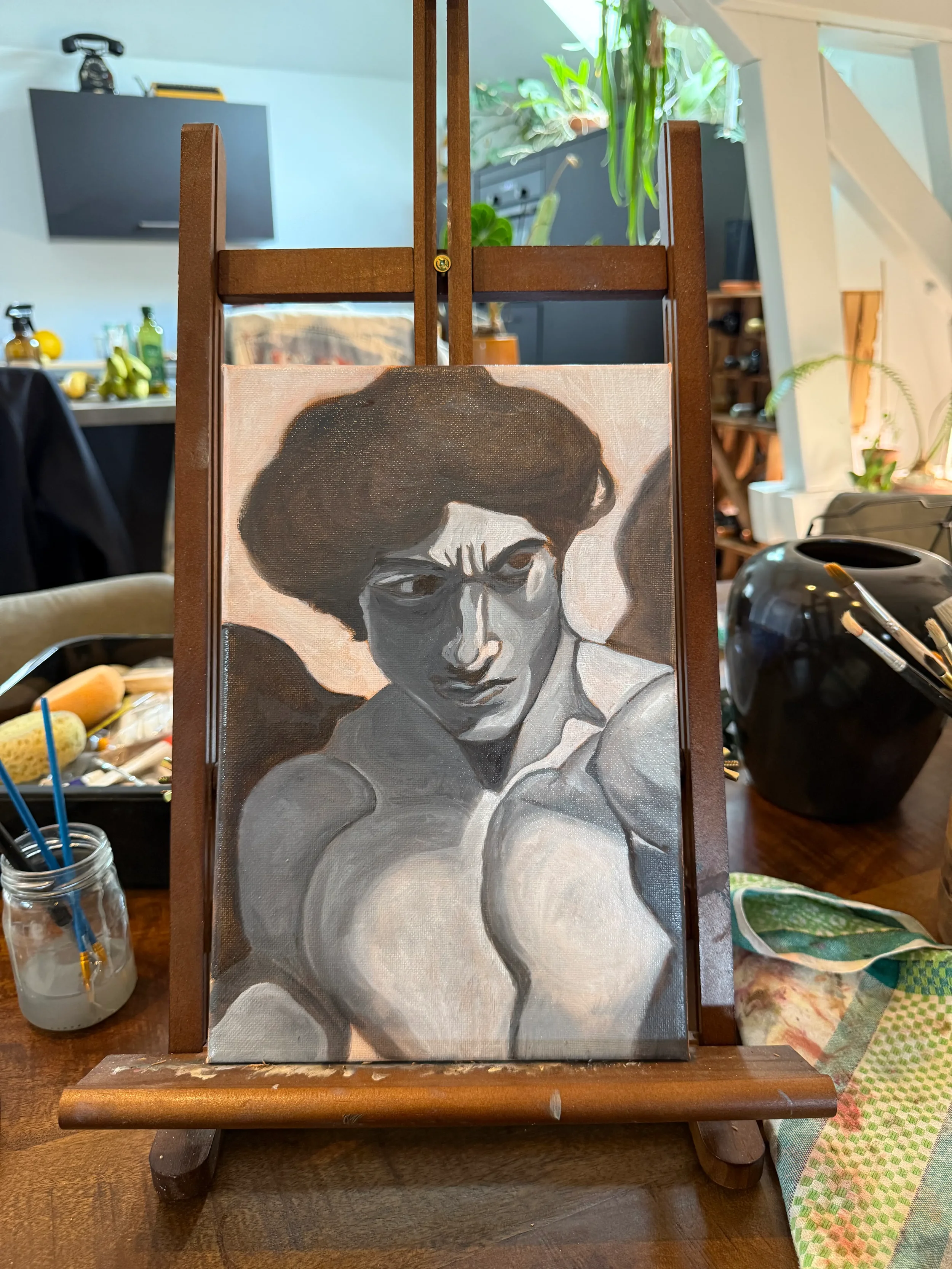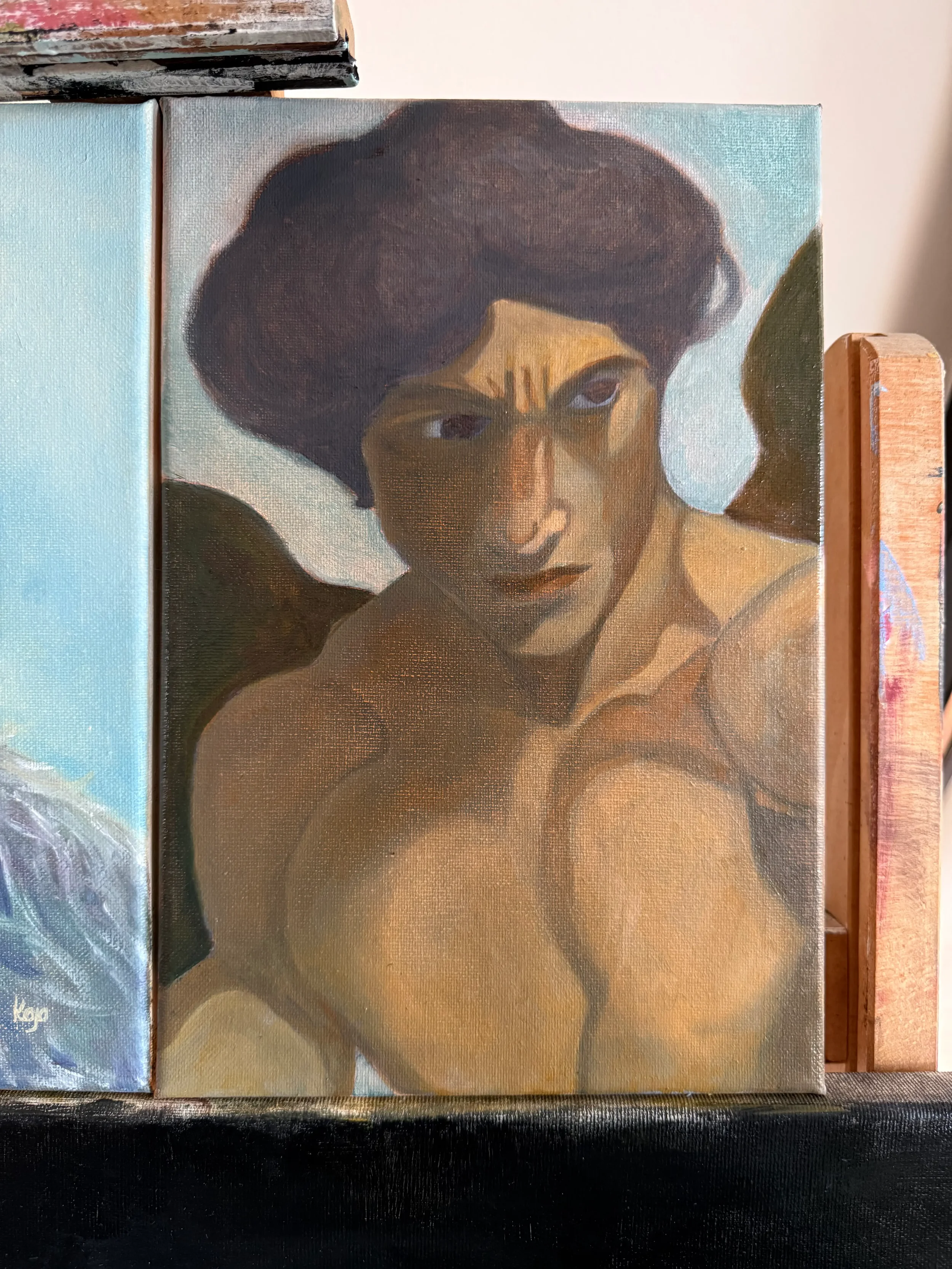
Grisaille underpainting: the basis for depth and contrast in your painting
Share
Want more depth in your painting? Discover the power of a grisaille underpainting.
Anyone who paints with acrylics or oils and is looking for more depth, contrast, and realism in their work would do well to explore the grisaille technique. This classic method—which involves creating an underpainting in shades of gray—forms the perfect foundation for vibrant layers of color and a strong light-dark contrast.
In this blog post, you'll read what a grisaille is exactly, why this technique is so powerful, which materials and pigments are best to use, and how to create an underpainting step by step.
What is grisaille?
Grisaille (pronounced gry-zay) is a painting technique in which the subject is laid out in shades of gray, even before the color layer is applied. This monochrome underpainting helps define light, dark, contrast, and volume. The word comes from the French gris , meaning gray, and was already used by old masters such as Jan van Eyck and Caravaggio. Master artists like Michelangelo, Leonardo da Vinci, and Rembrandt used this method to precisely establish the composition and the light-dark contrast in the first layers, which later enhances the painting's vibrancy and depth.
As also explained on Ying McLane's art site , this underpainting forms the fundamental basis by which artists can define form and expression early in the process, regardless of the medium.
Why create an underpainting?
The underpainting is the base layer that serves as the foundation for the final painting. By carefully building up this layer, you achieve:
-
Strong light-dark contrast: You determine early on where the light and shadow fall.
-
More depth: Layers of color get a natural undertone and appear more layered.
-
More realistic result: Especially with portraits and figurative works.
-
More efficient painting process: Less searching during coloring, because the structure is already clear.
In short: you build up your painting in layers, with the grisaille as a solid foundation.
Essential materials and pigments for your underpainting
A good underpainting often begins with a thin, transparent first layer, also called imprimatura . This prepares the canvas and creates a warm undertone.
Next, choose pigments that are rich and versatile. Traditionally, these are used in grisaille and underpaintings:
-
Burnt umber: a warm, neutral color, ideal as a base.
-
Venetian red: for warm gray tones that add vibrancy.
-
Bone black: for deep dark areas without becoming too harsh.
-
Titanium white: for light accents and highlights.
Instead of using pure black, mix burnt umber with blue or Venetian red, for example, to create warm or cool grays. This prevents your painting from becoming dull or dull and preserves the mood and color temperature of your work.
An alternative underpainting technique is egg tempera , in which egg yolk is mixed with pigments. This creates a firm, fast-drying base, which is sometimes combined with grisaille to enhance texture and depth.
Step by step: how to paint a grisaille underpainting
1. Sketch your subject on canvas or panel
A good underpainting begins with a strong foundation. You can use various materials for this: charcoal , graphite pencil , or directly with thinned paint . The choice depends on your preference and working method. In classic oil paintings, an initial foundation is often chosen with oil paint in a transparent, warm tone—such as burnt umber .
Burnt umber is ideal because it's both neutral and warm, dries quickly (especially when thinned with turpentine or another medium), and works beautifully with subsequent layers of color. Use a soft brush to create large shapes and contours, without going into too much detail. In this step, think primarily about large areas , light-dark distribution , and composition : where is the emphasis, where does the light fall, how do you divide the space?

2. Start with light gray tones
While many tutorials recommend mixing gray with black and white, many painters—especially within classical techniques—prefer a more subtle approach. Instead of black, for example, you might use burnt umber mixed with blue or red to create a rich, dark tone.
-
Burnt umber + blue gives a cool, neutral gray tone.
-
Burnt umber + red produces a warmer tone.
This way, you preserve the vibrancy of your underpainting and prevent the final result from looking dull or lifeless. Work in thin layers, using plenty of medium (such as linseed oil, turpentine, or liquin for oil paint) so the ground continues to show through and you can gradually build up the grisaille.
Tip: Avoid pure black paint, as it will mute your painting. By mixing your own grays, you maintain control over the mood and color temperature of your work, and it will be less likely to become dull.

3. Work from light to dark
Once the first layer of grayscale is in place, the real work begins: creating contrast . This is done by gradually adding darker and lighter areas, giving the subject more depth and shape.
Start with the middle tones , then work your way toward the dark shadows and highlights . This prevents the grisaille from becoming too heavy and creates space to build on.
With every brushstroke, pay close attention to your light source : where does the light fall? Which areas are in shadow? How hard or soft are the transitions? By consciously answering these questions, you enhance the three-dimensionality of your painting.
Ideally, use a soft brush or a soft, flat brush to create smooth transitions between light and dark. This phase is all about sculpting with light —you're essentially sculpting with paint, bringing out the volume of your subject without adding color.
Tip: Step back from your artwork occasionally or look at it in a mirror to check if the contrast and shape are still correct. This will prevent you from getting bogged down in too much detail.
Applying color over your grisaille
Once your grisaille is completely dry, you can begin applying color with glazes: thin, transparent layers of paint that allow the underlying gray tones to shine through. This preserves the contrast of the underpainting and adds warmth and vibrancy to your work.
To do this, use a medium to make the paint transparent and work in several thin layers for the best result.
Tip: Use medium to make the paint transparent and work in several thin layers for the best result.

Common Mistakes (and How to Avoid Them)
-
Using too much black quickly dulls your painting. It's better to choose a neutral gray.
-
Don't create a lighting plan → Always start by identifying your light source. Know where the light is coming from and where the darkest and brightest areas are. This makes setting up the colors and shades much easier in the later stages.
-
Moving to color too quickly → Let your grisaille dry completely and be patient with the build-up. This prevents your painting from becoming dull and muddy.
In summary
The grisaille technique is an age-old yet still relevant method for adding greater control, depth, and realism to your paintings. By working with a strong underpainting in grayscale, you avoid a flat finish and lay a solid foundation for building color and visual depth.
Consciously mixing gray tones with burnt umber, Venetian red, bone black, and titanium white also adds warmth and character to your paintings. Whether you're creating portraits, cityscapes, or figurative works, a good grisaille sets the tone for a powerful and expressive painting.
Want to try it yourself?
Want to see what grisaille looks like in practice? Check out my artwork at kojoart.nl or follow my creative process on Instagram and TikTok . Get inspired and try it yourself!
For those interested in the deeper artistic and technical functions of underpaintings, Nico Van Hout's doctoral dissertation from KU Leuven is a valuable resource. His research, which can be found on the KU Leuven website, extensively examines the use of grisaille in the work of Peter Paul Rubens. This dissertation offers insight into how this technique is used not only as an underlayer but also as an expressive tool.
